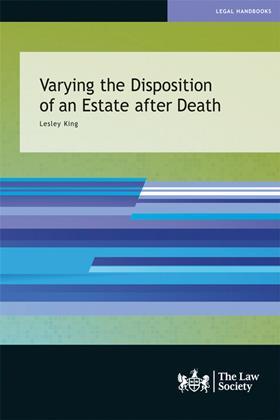Varying the Disposition of an Estate after Death
Lesley King
£50, The Law Society
★★★★★
It is too often the case that you find a file landing on your desk where the testator has made either unsuitable testamentary plans or no plans at all. It then falls upon the adviser to suggest post-death amendments that will help beneficiaries achieve the most effective transition of assets.
Most practitioners will agree that varying dispositions on death can get messy and complicated if not properly thought through. Having a succinct guide that gets straight to the point to help you navigate through it all is most welcome.
Lesley King is considered the fountain of knowledge for all things succession-related; her wisdom certainly emanates from each page of this small guide.

The book is made up of four key sections covering matters from basic disclaimers and variations to orders made under the Inheritance (Provision for family and dependants) Act 1975. Each section and type of variation is clearly explained with helpful practical examples and the occasional diagram. It also warns against potential pitfalls and suggests what may be done if a variation contains an error.
The appendices also contain several precedents that may act as helpful starting points for practitioners.
Tax is an obvious consideration for those varying estates. Ms King considers a number of tax implications and discusses how HMRC approaches different types of variations while making reference to relevant HMRC manuals.
The guide is technical and likely to attract the seasoned practitioner. However, those entering the industry should not shy away from it, as they will find it an informative and useful learning tool.
I’m certainly grateful that this book sits on my bookshelf.
Sangeeta Rabadia is a senior consultant in the private wealth department at Allard Bailey Family Law





























No comments yet